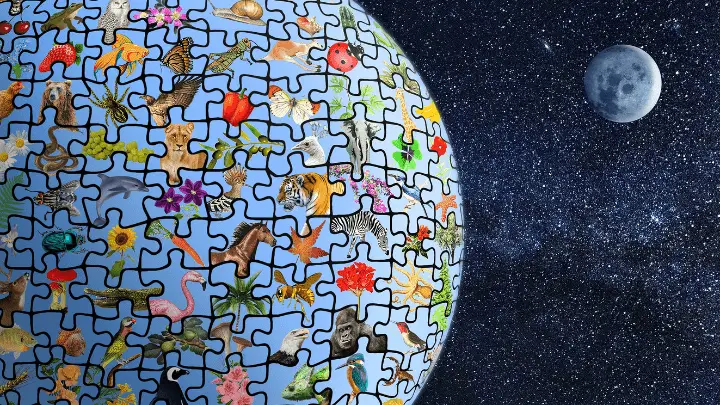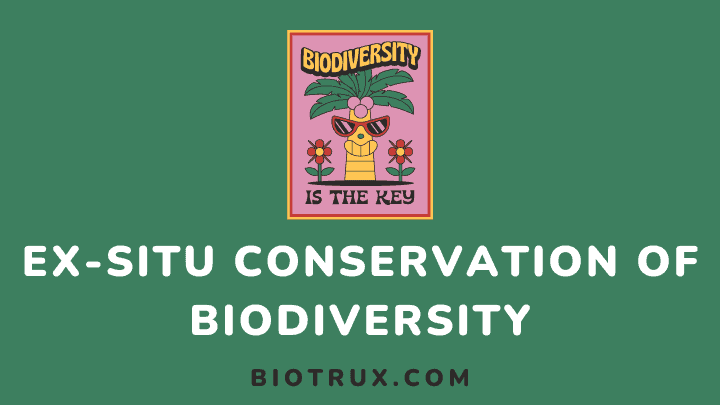Biodiversity is the variety of life on Earth, and its importance to humans cannot be overstated. However, with the rise of human activities, many species are becoming increasingly threatened, and we must take steps to protect them.
Ex-situ conservation is an effective way to do this, as it works to preserve biodiversity outside of its natural habitats. This type of conservation includes measures such as breeding programs, seed banks, botanical gardens, zoos, and aquariums.
This blog post explores the basics of ex-situ conservation and discusses its types, advantages, and disadvantages in preserving biodiversity.
What is Ex-Situ Conservation of Biodiversity?
Ex-situ conservation of biodiversity is a form of conservation that involves protecting and preserving species and their habitats outside of their natural range.
This includes the protection of habitats in zoos, botanical gardens, aquariums, seed banks, and other managed areas. Environmental degradation and climate change could cause species to become endangered or threatened in their natural habitats.
Therefore, ex-situ conservation is important to preserve those species. In addition, it contributes to genetic diversity as it prevents the loss of different varieties of a species due to overharvesting.
The practice of ex-situ conservation also allows for a species to be reintroduced into its native habitat after it has been taken out of its natural habitat.
Advantages of Ex-Situ Conservation of Biodiversity
Ex-situ conservation is a valuable tool for preserving the diversity of life on earth. This type of conservation offers many advantages, including:
1. Protection from rapid environmental change
In ex-situ conservation, species are protected from rapid and unpredictable changes in their natural habitats caused by human activity or climate change.
The artificial environment in which ex-situ conservation takes place can be easily managed and adjusted to ensure the survival of the species under study.
2. Supporting endangered species recovery
A species’ needs can be better assessed, and recovery strategies can be created by removing individuals from their natural habitat and bringing them to a controlled environment.
This can also prevent them from being exposed to potential threats that they may face in the wild.
3. Promoting research and education
Ex-situ conservation can provide an ideal opportunity for scientific research and education.
Consequently, researchers can observe species’ behavior closely without disrupting the natural environment.
Additionally, these facilities can be used as educational resources, helping to inform the public about biodiversity and encouraging conservation efforts.
4. Increasing genetic diversity
By transferring members of a species from one location to another, genetic diversity within the species can be increased. This can help ensure the species’ survival by giving them access to a wider range of genetic material and promoting genetic flexibility.
5. Enabling reintroduction programs
Once species populations are restored to their natural habitats, ex-situ conservation programs can provide a source for reintroducing individuals into the wild. It also helps to ensure the continuity of species in their native habitats.
Finally, ex-situ conservation of biodiversity is an invaluable tool for protecting our planet’s precious wildlife and safeguarding its future.
Types of Ex-Situ Conservation of Biodiversity

Ex-situ biodiversity conservation is the intentional, purposeful transfer and storage of living organisms outside their natural habitats. It is one of the two primary ways biodiversity conservation occurs, with the other being in-situ conservation.
Ex-situ conservation seeks to conserve biodiversity and prevent species extinction by removing them from their natural habitat and storing them elsewhere for safekeeping.
Below are five types of ex-situ conservation of biodiversity:
1. Captive breeding programs
A captive breeding program involves breeding endangered species in captivity to release their offspring into the wild once they grow up.
This is an important way to help repopulate species that have been threatened or endangered due to environmental issues, overhunting, or other factors.
A great example would be species like the black-footed ferret and California condor, which have successfully multiplied in captivity because few are left in the wild.
2. Seed banks
Seed banks are facilities that store and preserve seeds from various plant species. These banks store seeds from plants on the brink of extinction, so the seed can still be used to cultivate new plants if the species becomes extinct.
3. Aquariums
Aquariums are artificial habitats built to house aquatic species, such as fish and invertebrates. They allow visitors to observe the creatures in their natural environments without causing any harm. Aquariums are also used for research and educational purposes.
4. Zoos
Zoos are facilities where terrestrial animals are housed in enclosures, usually according to their natural habitat. They allow visitors to observe and appreciate animals while helping protect and conserve rare species.
5. Artificial habitats
Artificial habitats are designed to mimic natural habitats and provide an environment where threatened species can live and reproduce safely.
These habitats usually contain some combination of soil, water, food sources, and shelter, and are designed to recreate the conditions of a wild habitat as closely as possible.
Disadvantages of Ex-Situ Conservation of Biodiversity
1. Expense
One of the most significant disadvantages of ex-situ conservation is its cost. Building and maintaining off-site habitats can be very expensive, especially if the necessary resources are unavailable locally. In addition, transporting organisms to their new homes can add to the overall costs.
2. Limited genetic diversity
When organisms are taken out of their native habitat, their genetic diversity is often limited. In some cases, this can lead to a lack of genetic variation that could hinder their ability to adapt and survive in their new environment.
3. Stress
Moving an organism from one habitat to another can be very stressful, leading to physical and emotional health issues. Additionally, the stress can cause the organism to become more vulnerable to disease or predation in its new home.
4. Inaccurate representation
Ex-situ conservation does not always accurately represent the original habitat of the species being conserved. Consequently, this means that the species may not have access to the same food sources, predators, or other conditions as it would have had in its original home.
5. Unpredictable results
Because ex-situ conservation involves manipulating nature in a controlled environment, the results can be unpredictable. There is always a chance that something unexpected could happen and cause unforeseen problems or endangerment to the species being conserved.
FAQs
Which is better: In-situ or ex-situ conservation of biodiversity?
In-situ conservation can protect fragile ecosystems, while ex-situ conservation can help ensure that certain species are not wiped out by environmental disasters or habitat destruction. Ultimately, balancing the two approaches is essential for protecting the world’s biodiversity.
In reality, is ex-situ conservation of biodiversity practical?
Yes, but only when it is carried out correctly. Ex-situ biodiversity conservation can be a very effective and practical way of preserving species and habitats, but it requires extensive planning, monitoring, and management.
Final Thoughts
Ex-situ conservation of biodiversity is a critical tool in protecting our natural resources. The ability to maintain and protect species within controlled settings can help prevent the loss of entire species and genetic diversity.
Despite its drawbacks, including long-term maintenance and limited genetic diversity, this type of conservation offers an effective method of protecting endangered species.
We can ensure that endangered species are adequately protected and thrive in their natural habitats by educating the public about the benefits of ex-situ conservation.
You can also explore ways to advocate for the environment.
Thanks for reading.

